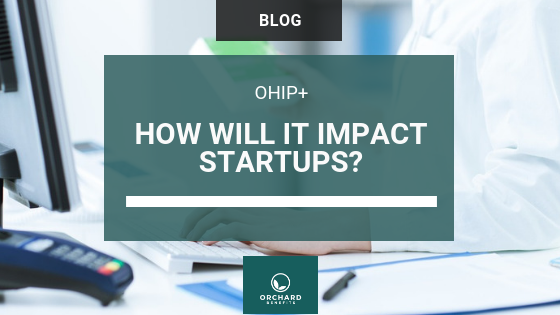UPDATE: On July 1, 2018, the new Ontario Conservative government announced that OHIP+ will be revised so that for anyone under 25, claims first go to an employee benefits plan that they are covered under, followed by OHIP+.
If you follow any major Canadian news outlets, you’ve probably heard about OHIP+ and maybe even read some conflicting opinions on it. As a founder of a startup or someone who is involved in recruiting and people management at a startup, you may be wondering – will OHIP+ impact us?
Before exploring the potential impact of OHIP+ on startups, let’s start with understanding what the program is all about.
What you need to know about OHIP+
Starting January 1st, 2018, more than 4,400 drug products will be free for anyone age 24 years or younger as part of a new Ontario government program called OHIP+: Children and Youth Pharmacare.
As a startup, this means that all of your employees who are 24 years and under who have OHIP coverage will be automatically covered by OHIP+. Rather than an employee benefits provider being the first payer on eligible drug products for any staff eligible for the program, OHIP+ will be the first payer.
While OHIP+ will cover 100% of the cost of more than 4,400 drug products currently available through the Ontario Drug Benefit program, it’s important to note that it doesn’t cover all prescription drugs.
It does include medications to treat:
- asthma
- depression
- anxiety
- attention deficit hyperactivity disorder (ADHD)
- infections (e.g. antibiotics)
- epilepsy
- diabetes (including test strips)
- reproductive health (e.g. birth control pills)
- some childhood cancers
- some childhood rare diseases
What OHIP+ means for startups
- You still need to offer drug plans to staff 24 and under
Since employee benefits plans cover more drugs than OHIP+, continuing to offer benefits to your 24 and under staff is a good idea in case a prescription they require isn’t eligible for coverage by the government.
Here’s one scenario.
A 22-year-old employee falls ill. He goes to the doctor who prescribes medication. He takes his prescription to the pharmacy to have it filled.
The pharmacy submits the prescription to the government to see if it’s covered. It turns out that this specific medication isn’t one of the 4,400 drugs eligible for payment by OHIP.
The employee provides his benefits insurance information and the drug is covered according to his company’s policy.
- Your staff 24 and under could save money
Unless your benefits plan covers prescription drugs at 100%, your employees who do qualify for OHIP+ coverage and require eligible medications will see cost savings.
For example, say your startups’ drug plan reimburses at 80% of the drug claim amounts. When OHIP+ takes care of 100% of the cost starting in the New Year, your staff will personally benefit from a savings of 20% on their prescription medication.
The outcome is that your employee will be happy to have a little extra cash in their pocket. As I always say: happy, healthy employees are productive employees. It’s really a win-win situation.
- You probably won’t notice a large cost reduction
One of the articles I read about the benefits of OHIP+ to companies suggests that employers will see a 10% reduction in claim costs. While this may prove to be true for larger companies, I speculate that it may not apply to startups. That said, only time will tell though.
Here’s the logic behind it.
Generally speaking, those under the age of 25 have low drug costs to begin with.
As Mike Sullivan, president of Cubic Health, a drug plan analytics firm in Toronto, says “For most employers, covering benefits for people under the age of 25 has not been a substantial financial hardship. They consume fewer drugs, but their drugs are also less expensive,” explains Sullivan.
In larger corporations in which the employee demographic is older (on average) and are more likely to have children covered by their benefits plans, prescription drugs make up 60-65% of claims, while paramedical services like massage and chiropractic make up 20%. The remainder are vision and dental.
The claims breakdown looks a bit different for startups (even larger ones with 200+) where the majority of staff fall between the ages 25-35 and are less likely to have children covered by their plan.
When we look at drug claims for over 75 startups that we work with in the GTA over the past year, prescription drugs only account for a small percentage of all claims, around 40%. Meanwhile, 50% of claims are for paramedical services like massage, acupuncture, and physiotherapy. The remaining 10% of claims are for other services, including vision and dental.
We just don’t see many startups with significant drug claims. While many people (some of whom may be your staff) will benefit from the OHIP+ initiative, I suspect that the impact to startups in terms of cost reductions on employee benefits will be minimal.
Questions about the impact of OHIP+ on your benefits plan?
I’m happy to discuss the impact on your startup employee benefits. You can contact me here or start a chat with our chatbot.







 Toronto, ON, Canada
Toronto, ON, Canada




